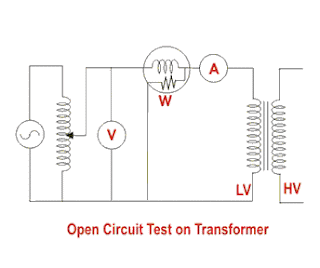Transformer Accessories | Breather and Conservator Tank | Radiator
For providing long service life to the transformer, different transformer accessories get fitted with it. These transformer accessories should also be included in our study for better understanding transformer operation and maintenance.
Transformer Accessories | Breather and Conservator Tank | Radiator
For providing long service life to the transformer, different transformer accessories get fitted with it. These transformer accessories should also be included in our study for better understanding transformer operation and maintenance.
Breather of Transformer
When the temperature changes occur in transformer insulating oil, the oil expands or contracts and there an exchange of air also occurs when transformer is fully loaded. When transformer gets cooled, the oil level goes down and air gets absorbed within. This process is called breathing and the apparatus that pass through the air is called breather. Actually, silica gel breathers controls the level of moisture, entering electrical equipment during the change in volume of the cooling medium and/or airspace caused by temperature increasing.
When the temperature changes occur in transformer insulating oil, the oil expands or contracts and there an exchange of air also occurs when transformer is fully loaded. When transformer gets cooled, the oil level goes down and air gets absorbed within. This process is called breathing and the apparatus that pass through the air is called breather. Actually, silica gel breathers controls the level of moisture, entering electrical equipment during the change in volume of the cooling medium and/or airspace caused by temperature increasing.
Conservator Tank of a Transformer
This is a cylindrical tank mounted on supporting structure on the roof of the transformer’s main tank. When transformer is loaded, the temperature of oil increases and consequently the volume of oil in the transformer gets increased. Again; when ambient temperature is increased, the volume of oil is also increased. The conservator tank of a transformer provides adequate space for expansion of oil. Conservator tank of transformer also acts as a reservoir of oil.
Explosion Vent of Transformer
The purpose of the explosion vent in a transformer is to prevent damage of the transformer tank be releasing any excessive pressure generated inside the transformer.
Construction of Explosion Vent of Transformer
This is nothing but a bent pipe with thin aluminium diaphragms at both ends. A wire mesh is provided at lower end of the explosion vent to prevent the pieces of rutted diaphragm from entering the tank. A wire mesh is also provided at upper end of vent pipe to protect mechanical damages of upper diaphragm.
Near the lower end, a small oil level indicator is provided to lower diaphragm ruptures; transformer oil rises in the vent pipe and is visible through the indicator indicating the failure of the lower diaphragm. If even after brushing the lower diaphragm, there is enough pressure and is not reduced, the upper diaphragm then bursts out to give way to release the inside pressure of transformer tank by thronging out oil and gases. In this way, explosion vent of transformer prevents mechanical damage to the transformer tank.
Sometimes, upper portion of conservator tank is connected with explosion vent with an equalizer pipe with or without a valve.
Sometimes, upper portion of conservator tank is connected with explosion vent with an equalizer pipe with or without a valve.
Radiator of Transformer
Oil immersed transformer is always provided with radiator. In case of electrical power transformer, the radiators are detachable and transported separately to the site. The upper and lower portions of the radiator unit is connected with the transformer tank via valves. These values are provided to prevent draining of oil during detaching a radiator unit from the transformer for cleaning and maintenance purposes.
Operation and Purpose of Radiator in Transformer
When transformer is in the loaded condition, the hot oil comes up in the main tank, and enters into the radiator tank through upper valve. As the heat transfer surface of the radiator is quite large, the oil gets cooled and enters into the transformer tank via lower value of radiator units. The convectional flow of oil in the tank and radiator of transformer continues. The cooling effect of radiator can be accelerated by applying force air to the radiator outer wall by air fans.








No comments:
Post a Comment